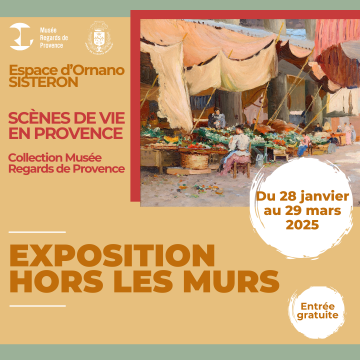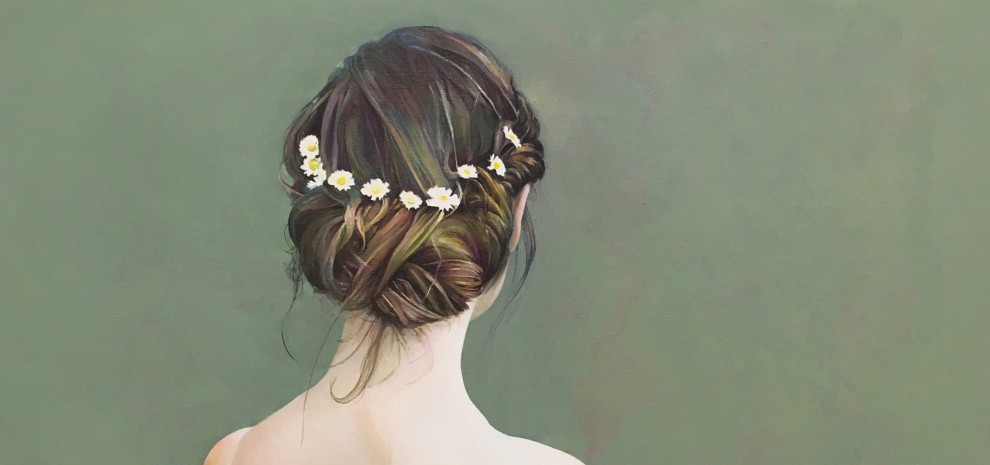
With its growing notoriety beyond the Provençal borders and throughout the Mediterranean, along with the success of its exhibitions, the Regards de Provence Association has been entrusted with numerous exhibition projects both in France and abroad, revisiting some themes already presented in the three exhibition venues it has operated over the past 27 years – Château Borély, Palais des Arts, and the Regards de Provence Museum.
From January 28 to Saturday, March 29, 2025, the off-site exhibition Scenes of Life in Provence will take place at the Espace d'Ornano of the Gallo-Roman Museum in Sisteron, showcasing nearly 30 paintings from the 19th and 20th centuries, drawn from the Regards de Provence Museum collection.
The exhibition “Scenes of Life in Provence” invites visitors on a journey through time, exploring the Provence of both its countryside and cities, highlighting the land of Giono through the splendor and realism of the works by the painters of the School of Landscape Artists of Marseille.
Landscape occupies a central place in the artistic revolution of the 19th century. The Provençal nature, in particular, became a major source of inspiration for Cézanne and Van Gogh. The South then became a popular destination, with Marseille, the Bouches-du-Rhône, the Alpes de Haute-Provence, the Var, the Vaucluse, as well as the countryside, emblematic villages, the southern coastline, and local life scenes captivating the artists.
This enthusiasm gave rise to a rich pictorial movement, full of sensitivity and deeply rooted in the cultural heritage. Each artist conveyed their lived experience, showcasing the beauty and diversity of this land, while exploring their own artistic practice: academicism, impressionism, post-impressionism, symbolism, fauvism…
In the 19th century, despite the advances in industrialization, France remained largely rural, especially in Provence. Representations of the countryside and agricultural life became central themes for Provençal painters and writers. It is around this rural life that bonds were formed between artists and writers. From romanticism to surrealism, they often shared the same struggles and aspirations.
In the 20th century, a new generation of artists shook up the vision of the South, asserting their personal identity. Audibert, Marchand, and Verdilhan stood out for their talents as colorists and their use of light, employing dense materials and intense colors. Their boldness was reflected in the use of pure tones and the simplification of forms into concentrated masses.
At the same time, Dellepiane developed a style characterized by powerful, soft, and veiled light, and a technique that became more liberated and refined over time. Verdilhan, on the other hand, offered landscapes and life scenes outlined in black, where diagonals and verticals rhythmically structured his compositions. A versatile artist, he explored a wide variety of styles and movements – impressionism, fauvism, expressionism – offering a multifaceted body of work with remarkable pictorial richness.
Urban life scenes are also represented: Marseille is notably highlighted, as its port took on a global dimension, and painters developed a distinct fascination for its perpetual vibrancy. However, the small trades and ancestral traditions also captured their attention: Ponchin, Reynaud, and Nardi immortalized women waiting for customers or fishermen mending their nets. With Valère Bernard and Pierre Grivolas, who depict scenes of “castagne,” the passionate nature of the Marseillais is emphasized, not without humor.
In about thirty paintings, this exhibition offers a remarkable summary of a Provence that, for a little while longer, is predominantly rural, while also presenting this pivotal moment at the turn of the 20th century, when the Provençal avant-garde turned its back on tradition to develop a new vision of painting and Provence, all in vibrant colors and imaginative compositions.
